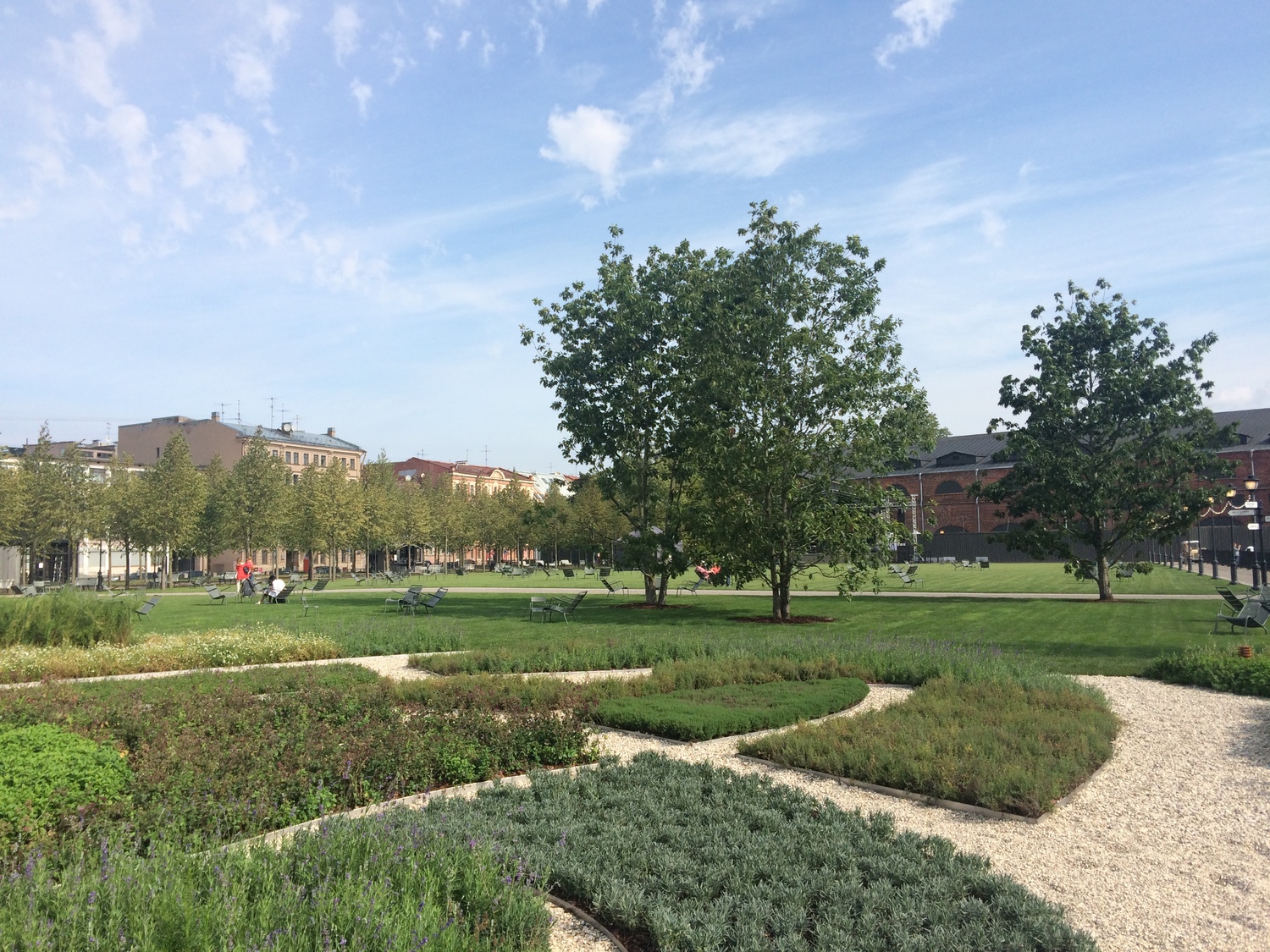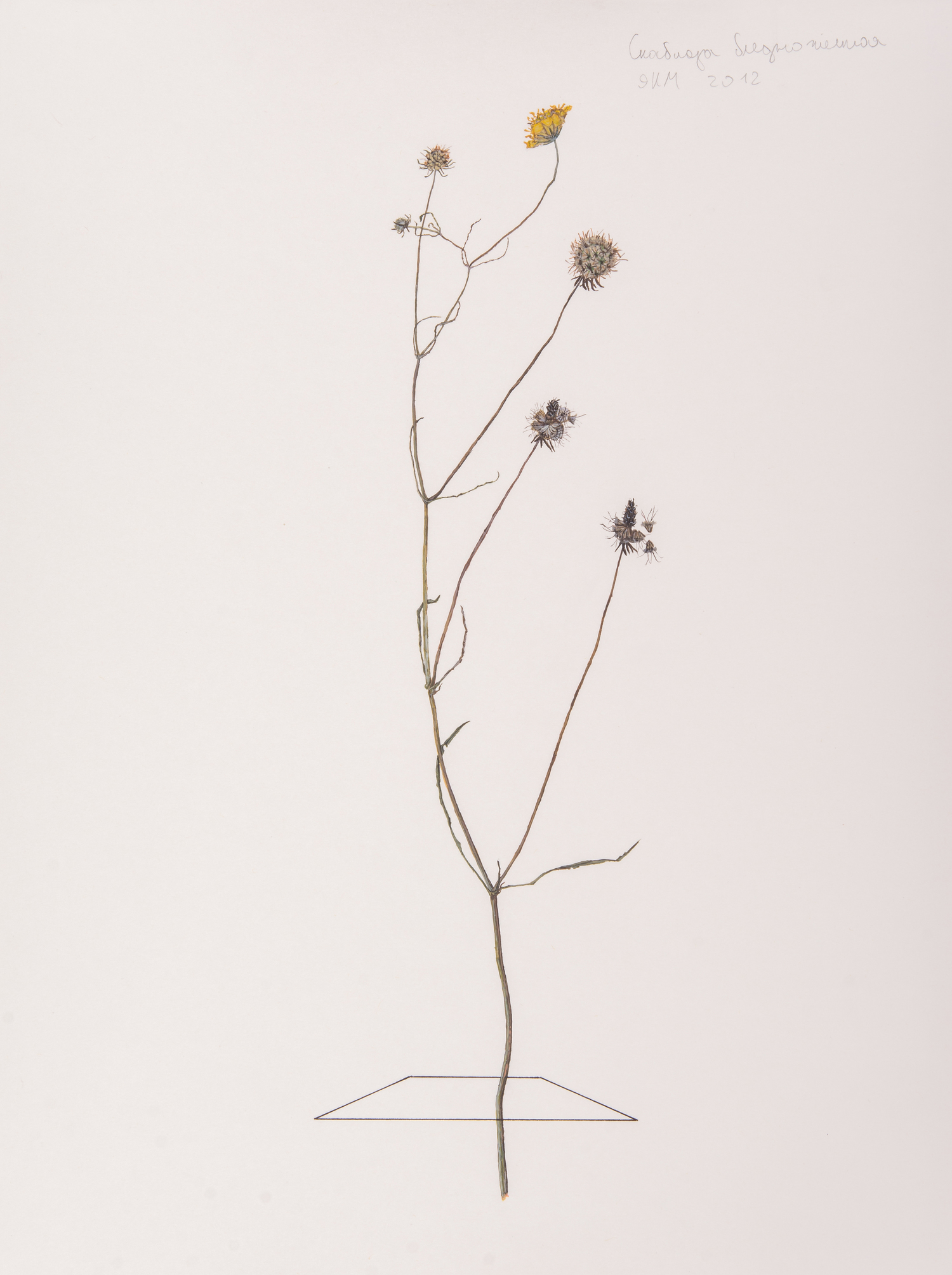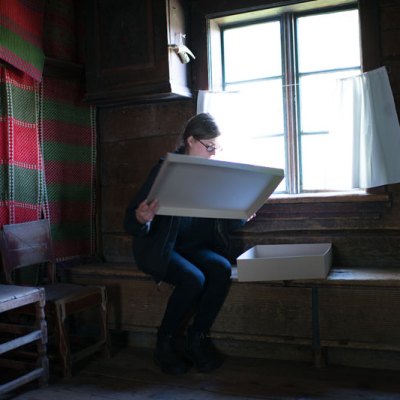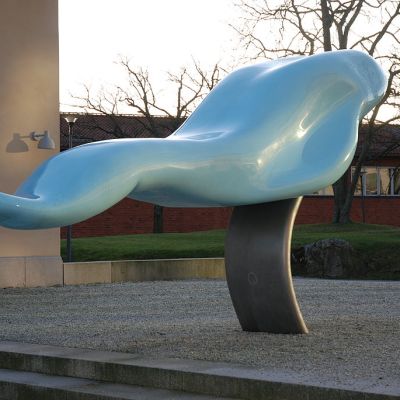The recent reopening of New Holland Island, a former military site in central St Petersburg, has not been without difficulty. After Norman Foster’s ostentatious redevelopment scheme fell through, Roman Abramovich stepped in. Where Foster’s design was brash and overbearing, the current masterplan – overseen by Dasha Zhukova and designed by New York’s WORKac and Dutch landscape architects West 8 – is being pitched as a sensitive restoration project. Renovation of the site’s impressive 18th-century buildings is ongoing. Shops, offices, and upmarket apartments are in the pipeline. For now, there is a smartly landscaped park, a series of temporary pavilions to offer food, drink and facilities, and the first St Petersburg outpost of Zhukova’s Moscow-based Garage Museum of Contemporary Art.
‘New Holland will be a new focal point for the city,’ says Luba Leontieva of locally-based Ludi Architects, who have worked on several aspects of the project. ‘This will be an important place to show contemporary art in St Petersburg.’ Not everyone is convinced, however. One curator I spoke to criticised the lack of local artists involved. ‘It’s a Moscow project in St Petersburg,’ they said.
New Holland Island. Photo by Crystal Bennes

This cuts to the heart of a tension between these two great cities. St Petersburg has history, literary heritage and, of course, the Hermitage. But Moscow is where the money is. As I reported back in March, Moscow’s contemporary market is growing fast. In St Petersburg, by contrast, most of the major cultural institutions are oriented towards the city’s illustrious past and there are only a few established commercial galleries.
Recent years have seen some developments. New private museums have opened, such as Erarta (opened 2010) and Novy Museum (opened 2012) but the collections and programmes of both could be improved. 2014 saw the city play host to the (admittedly controversial) Manifesta10, which could have been a significant boost to the visibility of the arts. But the consensus from those I spoke to is that it failed to engage the public. One hopes two forthcoming festivals will have a more positive impact: Forma Biennale of Museum Design (30 September–30 October) and Art Prospect international festival of public art (22–25 September).
Politics can make life difficult. State funding for the arts is scarce, art schools are highly traditional and academic, and foreign-funded NGOs have to declare themselves as ‘foreign agents’ – in 2015, Dmitry Zimin’s Dynasty Foundation, which funded art-science projects and festivals in addition to scientific research, shut down after being branded one. In May there was an outcry when the National Centre for Contemporary Arts was merged with State Museum and Exhibition Centre (ROSIZO) at a moment’s notice.
One organisation making a big difference is Pro Arte. Based beneath the arches of the Peter and Paul Fortress, the independent non-profit was founded in 1999. Today, Pro Arte runs an education programme, institutes collaborations with the city’s museums, and organises some 250 events per year (including festivals like Forma) through a staff of just nine. Many of St Petersburg’s current crop of emerging artists have benefitted from Pro Arte’s programmes.
Scratch beneath the surface and there is a lot going on in St Petersburg: from art in a suburban library curated by Helsinki-based Alkovi Galleria to large-scale drawings at Marina Gisich, one of the few established commercial galleries. FotoDepartment – which includes a library, shop and educational programme as well as a gallery space – is showing works by its recent students (until 15 September). Highlights include works by Liza Dremova and Denis Shulepov. Over at the recently opened Street Art Museum, James Bridle has done his usual drone outline as part of ‘Crossing Borders / Crossing Boundaries’ (until 24 September).
The maze of studios and galleries at Pushkinskaya 10 – once a hub of counter-cultural expression – is now enjoying something of a renaissance. Unfortunately, the gallery at Loft Project – taking up the whole fifth floor of the former Smolinsky Bread Factory – is more interesting than the work inside. The building – like Taiga too – is crammed with little shops and cafes, and, tellingly, it costs more to access the roof than the gallery.
At Anna Nova Gallery is a series of painstaking drawings, paintings and sculptural pieces by Ukrainian-born sculptor Aljoscha that are formed in imitation of the growth of an organism or crystal – increment by increment. The gallery is surprisingly busy on the day I visit, although many people are simply taking photos of themselves amid the large pink installation upstairs to post to Instagram. The gallery, probably the most impressive of the city’s commercial offerings, has also launched an online shop.
Intimnoe Mesto

Most intriguing, however, is Intimnoe Mesto. The space was set up by Marina Maraeva in her own home (its name means ‘Intimate Place’ in Russian). Using a home as a gallery is reasonably common in London, but there it’s a question of house prices. In Russia, it’s politics. Putin’s increasing restrictions of LGBT rights apply mostly to public spaces; private homes, Maraeva explains, remain much safer. ‘In Soviet times, there was a tradition of apartment galleries,’ she tells me. ‘Now sadly it is happening again.’
The gallery takes a refreshingly open approach to programming. Artists wishing to hold an exhibition or event simply add their details to a shared document and agree to help out when it’s the turn of another artist. The result seems to be a rare combination of community and openness. During my visit there is a solo exhibition for Tatiana Danilevskaya, an artist and teacher with a PhD in philology. On show is a series of Spirograph drawings alongside diary entries detailing the amount of time spent in mundane activities like eating, sleeping or talking. Part of the purpose is to explore art’s struggle to be seen as a professional activity. ‘In Russia, art is like a hobby,’ says Danilevskaya. It reminds me of what Finnish artist Jussi Kivi said in 2015.
Despite the passion of those involved, it’s clear that these are difficult times for St Petersburg’s art scene. Many people I speak to are understandably wary about speaking openly. I’m told that Luda – one of the city’s most talked about contemporary art spaces – is closing. Maraeva says she’s planning to close Intimnoe Mesto too.
Herbarium (2012–present), Ilya Dolgov. Image courtesy the artist

Inside the compact gallery at New Holland Island is ‘Experiences of the Imaginary’ (until 25 September). The work is pleasant enough but oddly unambitious. No wonder critic Valentin Dyakonov coined the phrase ‘The New Boring’ to describe some of these artists. A series of small-scale botanical works by Ilya Dolgov catches my eye: small, beautiful paintings of pressed flowers floating above or within identical isosceles rhomboids. Ordinarily this is the kind of work I love, but here it feels less a critique of our attitudes to nature – from the destructive collecting impulse of the 19th century to today’s boxing up and selling off – and more a restatement of the same logic. Neat, beautiful, expensive, hollow? Perhaps it’s just a question of context.


